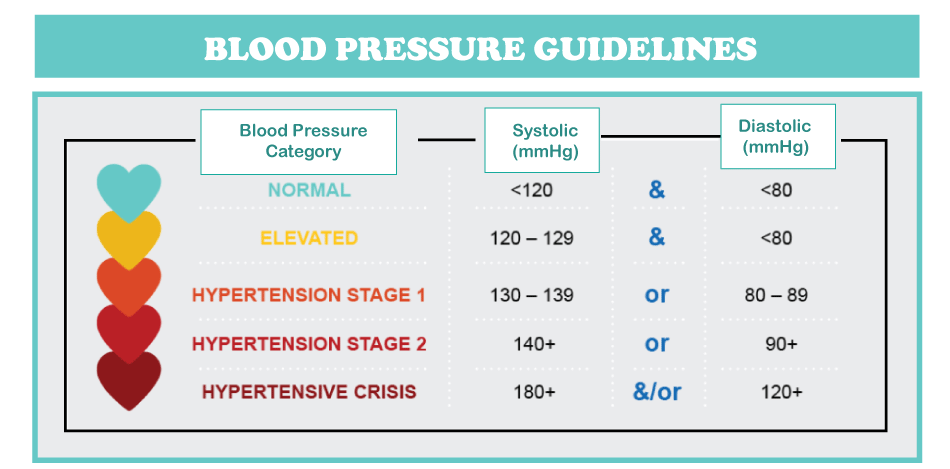Systolic Blood PressureSystolic blood pressure (SBP) is the pressure exerted by the blood against the walls of arteries when the heart beats and pumps blood into circulation. The SBP is an essential measurement of blood pressure, and it is a critical indicator of cardiovascular health. In this article, we will discuss the physiology of SBP, its measurement, normal and abnormal ranges, factors that affect it, and its significance in health and disease. 
Physiology of SBPThe heart is a muscular pump that circulates blood through the body. During each heartbeat, the heart contracts and pushes blood out of the left ventricle into the aorta, the main artery that carries blood to the rest of the body. The force generated by the contraction of the heart muscle results in an increase in pressure in the arteries, which is measured as SBP. SBP is affected by the volume of blood pumped by the heart (stroke volume) and the resistance of the blood vessels to the flow of blood (peripheral resistance). The stroke volume is determined by the strength of the heart's contractions and the amount of blood returned to the heart by the veins. The peripheral resistance is determined by the diameter of the arteries, which is regulated by the sympathetic nervous system and other factors. Measurement of SBPThe SBP is measured using a blood pressure cuff and a sphygmomanometer, a device that measures the pressure of the cuff on the artery. The cuff is wrapped around the upper arm, and the pressure is gradually increased until it occludes the artery. Then, the pressure is slowly released, and the point at which the blood flow resumes is noted. This is the SBP. The measurement is usually given as two numbers, the SBP over the diastolic blood pressure (DBP). Normal and Abnormal Ranges of SBPThe normal range for SBP in adults is considered to be between 90 and 120 mmHg. A value between 121 and 130 mmHg is considered elevated blood pressure, and values above 130 mmHg are considered hypertension. Hypertension is a leading risk factor for cardiovascular disease, stroke, and kidney disease. Factors that Affect SBPSeveral factors affect SBP, including age, sex, genetics, lifestyle, and medical conditions. In general, SBP tends to increase with age, especially after the age of 60. Men tend to have higher SBP than women, and genetics can also play a role in blood pressure regulation. Lifestyle factors that can affect SBP include diet, exercise, stress, and smoking. A diet high in salt, saturated fat, and processed foods can increase blood pressure, while a diet rich in fruits, vegetables, and whole grains can help lower blood pressure. Regular physical activity can also help lower blood pressure, while stress and smoking can increase blood pressure. Medical conditions that can affect SBP include diabetes, kidney disease, and sleep apnea. Diabetes can damage the blood vessels and lead to hypertension, while kidney disease can affect the body's ability to regulate blood pressure. Sleep apnea, a condition in which breathing is interrupted during sleep, can also increase blood pressure. Significance of SBP in Health and Disease
TreatmentTreatment of high SBP typically involves lifestyle changes and medication. Lifestyle changes include dietary modifications, such as reducing salt and saturated fat intake, increasing fruit and vegetable consumption, and limiting alcohol and caffeine intake. Exercise is also an important component of lifestyle modifications, as it can help lower blood pressure, reduce stress, and improve overall cardiovascular health. Medications for hypertension include diuretics, beta-blockers, ACE inhibitors, and calcium channel blockers. The choice of medication depends on several factors, including age, medical history, and the presence of other medical conditions. In some cases, multiple medications may be needed to control blood pressure. It is important to note that hypertension is often asymptomatic, meaning that many people may not be aware that they have high blood pressure. Regular blood pressure screenings are therefore important, particularly for individuals at higher risk of developing hypertension, such as older adults, individuals with a family history of hypertension, and those with certain medical conditions. ConclusionSystolic blood pressure is a critical measurement of cardiovascular health and is used to diagnose and manage hypertension, a leading risk factor for cardiovascular disease, stroke, and kidney disease. It is affected by several factors, including age, sex, genetics, lifestyle, and medical conditions. High blood pressure is also a risk factor for cognitive decline, certain types of cancer, kidney disease, vision loss, and sexual dysfunction. Treatment typically involves lifestyle modifications and medication, and regular blood pressure screenings are important for the early detection and management of hypertension.
Next TopicBrain
|
 For Videos Join Our Youtube Channel: Join Now
For Videos Join Our Youtube Channel: Join Now
Feedback
- Send your Feedback to [email protected]
Help Others, Please Share









